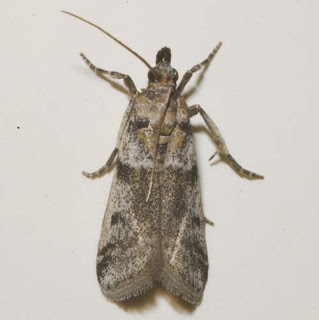Blue Card Program Program Discussed
 |
|
Joel Siegel is USDA ARS Research
Entomologist based in Parlier
|
In terms of heat units, from the NOW point of view, we are about 17 days ahead of last year,” Siegel noted. “But harvest is going to be much earlier this year than last year. “If we were going to have a late harvest with all these moths out there, there would be greater damage due to crop exposure,” he said.
 |
| Adult Navel Orangeworm |
Improving Surface and Ground Water Problems
By Patrick Cavanaugh, Editor
 |
| Parry Klassen |
And expanded story on the ESJWQC will appear in the September 2013 issue of Pacific Nut Producer magazine.
 No fruit can move out of the quarantine areas unless it has been treated and/or free of stems and leaves.
No fruit can move out of the quarantine areas unless it has been treated and/or free of stems and leaves.
 |
|
Participants in the Produce Professional Safety Program at UC Davis
Photo by Penny Stockdale, UC Davis Post Harvest Technology Center.
|
This course is designed for produce recall teams for companies throughout the produce supply chain including Growers/Shippers/Packers, Processors, Wholesalers & Distributors, Retailers, Restaurant Operators and Industry Organizations (including commodity boards and associations).
At the very least, your recall team should include management, technical staff and marketing/communications staff. In addition, United Fresh recommends attendance by Operations Staff, Food Safety Staff, Q&A Staff, Customer/Member Services Representatives, and your company Crisis Management Team.
For more information please contact: Erin Grether, Government Relations Coordinator, United Fresh Produce Association, at (202) 303-3400 or egrether@unitedfresh.org, http://www.unitedfresh.org/recallready